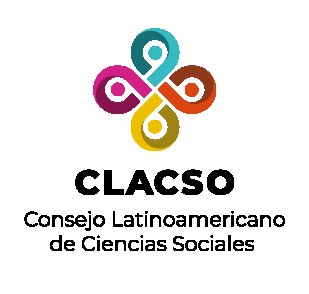Authors
Abstract
Abstract: The problem of domestic violence refers to a process of setting up a particular relational dynamics between family members, regardless the typology established, which is determined by a system of power and domination that denotes exclusive positions for some and inclusive for others, which are mediated by aspects such as roles, gender, generation. Hence to carry out intervention processes it is required to take into consideration that manifestations of violence respond to individual logics that contain rational senses and meanings proper of the family structure. The study presented below is part of the Police line services. Its goal is to renew the Caldas Police Department intervention in domestic violence cases, from the elaboration and presentation to the Police Department institutional authorities of specific actions as a contribution to the culture of citizenship coexistence. A mixed methodology, was used, quantitative reading, which was referred to a deductive view of the phenomena through which causes, manifestations, and consequences of domestic violence were identified in some municipalities in the department of Caldas. From the social mapping as a strategy for collecting information, it was possible to obtain an interpretative view of the reality from social actors such as residents of municipalities, community leaders, personnel working in institutions like the Colombian Family Welfare Institute, the Spokesperson, the Ombudsman Office Representative, Centers for the attention of domestic violence, police officers according to the specific social-cultural peculiarities from Manizales, Villamaria , Anserma, Chinchiná and La Dorada, regarding the procedures carried out by the police officers in cases of domestic violence. Some of the main conclusions determined that, from the social and the cultural perspective, alcohol and psychoactive substances consumption are the main causes for domestic violence in the Department of Caldas. Others are, unemployment, poverty, lack of men and women education, difficulties between couples and with their children. The EIP Police Strategy for interfamilial coexistence which contemplates three fundamental core ideas: Education, Intervention and Projection, is recommended.
References
Beck, Ulrich; Beck, Elisabeth. (2001). El normal caos del amor. Las nuevas formas de relación amorosa. España: Paidós.
Bringiotti, María Inés; Palazzo, Silvia Andrea. (2007). Palabras y espejos. Aportes para prevenir el legado familiar de la violencia. Buenos Aires: Lumen-hvmanitas.
Carvajal Bermúdez, Jorge Enrique. (2010). “Soft Law y el uso de la fuerza”. En: Reflexiones desde la Academia. Memorias de Investigación. Ensayos y artículos. No. 6. Manizales. Cirillo, Stefano; Di Blasio, Paola. (1989). Niños maltratados. Diagnóstico y terapia familiar. Barcelona: Paidós.
Corsi, Jorge. (1994). Violencia intrafamiliar. Una mirada interdisciplinaria sobre un grave problema social. Buenos Aires: Paidós
Flaquer, Luís. (1998). El destino de la familia. Barcelona: Editorial Ariel S.A.
Garza Mercado, Ario. (1981). Manual de técnicas de investigación. México: El Colegio de México. Gil, Eliana. (1996). Tratamiento sistémico de la familia que abusa. Argentina: Granica. Gimeno Collado, Adelina. (1999). La familia: el desafío de la diversidad. Barcelona: Editorial Ariel S.A.
Gottman, J. M. (1991). “Chaos and regulated change in families: a metaphor for the study of transitions”. In: Cowan, P. A. & Hetherington, M. Family transitions. New Jersey: Hillsdale.
Hernández Córdoba, Ángela. (1989). Inventarios usados en un estudio nacional de familias a través del ciclo de vida familiar. Bogotá: Universidad Santo Tomas.
López Díaz, Yolanda. (1999). “La familia, una construcción simbólica: de la naturaleza a la cultura”. En: Revista Colombiana de Trabajo Social. No. 13. CONETS.
Palacio Valencia, María Cristina; Valencia, Ana Judith. (2001). La identidad masculina: un mundo de inclusiones y exclusiones. Manizales: Universidad de Caldas.
Palacio Valencia, María Cristina. (et al.) (2001). Los conflictos y las violencias recientes en Colombia. Investigación realizada con el auspicio de COLCIENCIAS y Banco Interamericano de Desarrollo BID.
Palacio Valencia, María Cristina. (2004). Familia y violencia intrafamiliar. De la invisibilización al compromiso político. Manizales: Universidad de Caldas. Departamento de Estudios de Familia. Pérez Gómez, Carmen Cecilia. (2000). “Trabajo social y procesos familiares”. En: Revista Colombiana de Trabajo Social. No. 14. CONETS.
Restrepo S, Ángela María. (1999). Técnicas y estrategias de atención a la familia. Manizales: Universidad de Caldas.
Sánchez Rengifo, Luz Mary. (2004). “Evaluación y trazado de la estructura de la familia. Evaluación del conflicto conyugal”. En: Serie Documentos de trabajo No. 4. Cali: Universidad del Valle.
SECCIONAL DE INTELIGENCIA DE LA POLICÍA. (SIJIN). (2010). Estadística casos de violencia intrafamiliar en el Departamento de Caldas.
Strauss, Anselm; Corbin, Juliet. (2002). Bases de la investigación cualitativa. Técnicas y procedimientos para desarrollar la teoría fundada. Antioquia: Universidad de Antioquia.
Taylor, S. J.; Bogdan, R. (1994). Introducción a los métodos cualitativos de investigación. España: Paidós.
Tenorio, Jorge. (1992). Técnicas de investigación documental. Atizapán de Zaragoza. México: McGraw Hill.

 PDF (Español)
PDF (Español)
 FLIP
FLIP
























